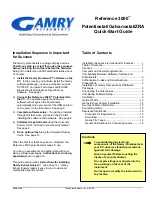
61
4. Press either the flashing MIDI coupler piston or General Cancel (‘
0
’) to exit.
The Great A MIDI coupler channel assignment is saved with other settings in a
combination piston. It can also be saved permanently by performing the MIDI Save
procedure. See “MIDI Save” on page 80.
Octave Shift
Normally, sounds controlled by MIDI couplers play at concert pitch; playing middle C on an
organ keyboard with a corresponding MIDI coupler active will cause middle C to be heard.
The Octave Shift control allows you to shift sounds controlled by MIDI couplers up or down
by one or two octaves. Each MIDI coupler can be shifted independently.
This is tremendously useful. When controlling a single sound from a keyboard or pedal,
Octave Shift allows the instrument to play in a range which may be more appropriate; for
example, you can shift a Tuba down one octave so that it plays at a more normal pitch.
Another nice effect is to use both MIDI couplers in a division to control a soft ensemble
sound, such as
Slow Strings
, but set one coupler to play the sound at normal pitch and set the
other so that the sound is shifted down one octave. When you combine the two, you achieve
a warmer ensemble than if you used one voice alone.
Shifting the Octave of a MIDI Coupler
To shift a MIDI coupler up or down by octaves:
1. Hold
SET
and press the MIDI coupler piston (it will flash).
2. Rotate the Select knob to highlight the
Octave
field:
M I D I C o u p l e r G T A
C h a n n e l
O c t a v e
V e l o c i t y
1
N O R M
6 4
3. Rotate the Alpha dial to select the desired setting (
UP 2
,
UP 1
,
NORM
,
DN 1
or
DN 2
).
4. Press either the flashing MIDI coupler piston or General Cancel (‘
0
’) to exit.
Instead of saving, you may press and hold General Cancel (‘
0
’) and momentarily press
SET
to return MIDI couplers to their defaults. This Reset procedure also returns
Voice Palette selections to their defaults.
!
















































